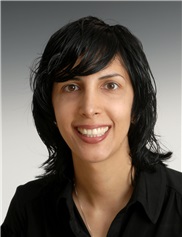Grants Funded
Grant applicants for the 2024 cycle requested a total of nearly $3 million dollars. The PSF Study Section Subcommittees of Basic & Translational Research and Clinical Research evaluated more than 100 grant applications on the following topics:

The PSF awarded research grants totaling over $650,000 dollars to support more than 20 plastic surgery research proposals.
ASPS/PSF leadership is committed to continuing to provide high levels of investigator-initiated research support to ensure that plastic surgeons have the needed research resources to be pioneers and innovators in advancing the practice of medicine.
Research Abstracts
Search The PSF database to have easy access to full-text grant abstracts from past PSF-funded research projects 2003 to present. All abstracts are the work of the Principal Investigators and were retrieved from their PSF grant applications. Several different filters may be applied to locate abstracts specific to a particular focus area or PSF funding mechanism.
Enhancement of Peripheral Nerve Regeneration using Intracellular Sigma Peptide
Bahar Bassiri Gharb MD, PhD
2018
Cleveland Clinic Foundation
Pilot Research Grant
Peripheral Nerve
Annually 360,000 people in the United States suffer from peripheral nerve injury and treatment of these injuries costs an estimated $150 billion per year. Functional recovery of peripheral nerve repair remains far from pre-injury level. Despite the continuous investigation into new interventions (e.g. growth factors, transient administration of immunosuppressive medications, transient electrical stimulation), no effective therapy has been developed to significantly improve the post-operative clinical outcomes. During the process of nerve regeneration, different types of factors accumulate in the severed nerve endings and support or inhibit axon regeneration. Among these chondroitin sulfate proteoglycan (CSPG) is the major inhibitory factor. It binds to the molecules on the nerve cells, known as receptor protein tyrosine phosphatase sigma (PTPs), and slows down nerve regeneration. We hypothesize that using a novel therapeutic approach to silence the function of CSPG will improve nerve regeneration leading to better functional recovery. We have designed a high-affinity peptide, called intracellular sigma peptide (ISP), that can selectively bind to PTPs receptors and relive the CSPG's inhibitory action promoting axonal regeneration. We have shown the effectiveness of ISP to improve nerve regeneration in the treatment of central nervous system injuries in a rodent model. Systemic delivery of this peptide over weeks restored substantial innervation to the spinal cord below the level of injury and facilitated functional recovery of both locomotor and urinary systems. Additional experiments showed that after avulsion of nerve roots from the spine and re-implantation, there was a significant motor functional improvement in ISP treated group compared to control group. In the proposed study we will evaluate the ISP effectiveness for the treatment of peripheral nerve injuries. For this reason, a part of the sciatic nerve (a large peripheral nerve in the leg) of the adult rat will be removed and replaced with a 20 mm nerve recovered from the sciatic nerve of the second rat. Then animals will receive daily treatment with ISP. Nerve conduction evaluation, behavioral, and histological methods will be utilized to measure the axonal regeneration and functional sensorimotor recovery. If successful, this treatment will significantly impact the treatment of patients with peripheral nerve injuries.
 In the past ten years I have accumulated extensive experience in clinical and experimental reconstructive microsurgery as well as in hand and craniofacial surgery. This background allowed me to focus toward vascularized composite allotransplantation. The highlights of my career include:
1. Participation in 2 hand transplant procedures at Christine Marie Kleinert Institute (Louisville, KY). I was directly involved in the care of the hand transplant recipient.
2. Follow up of the first face transplant performed at Cleveland Clinic. In December 2008, Cleveland Clinic performed first, near-total face transplant in the United States. At the time, it was considered the largest and most complex face transplant in the world. The second face transplant was performed in September 2014. My role involved preparation of the donor and recipient and follow up of the recipient postoperatively. This great opportunity resulted in the authorship of several peer–reviewed publications and book chapters.
3. 2015 Kawamoto Award for the best paper presented at the 71 Annual Meeting of the American Cleft Palate-Craniofacial Association. I received this highly competitive award for a paper entitled: Retrieval of a full facial allograft based on the maxillary artery: indications and technique.
4. My overall research experience includes: 44 peer-reviewed publications, 8 book chapters, and over 80 conference presentations.
In the past ten years I have accumulated extensive experience in clinical and experimental reconstructive microsurgery as well as in hand and craniofacial surgery. This background allowed me to focus toward vascularized composite allotransplantation. The highlights of my career include:
1. Participation in 2 hand transplant procedures at Christine Marie Kleinert Institute (Louisville, KY). I was directly involved in the care of the hand transplant recipient.
2. Follow up of the first face transplant performed at Cleveland Clinic. In December 2008, Cleveland Clinic performed first, near-total face transplant in the United States. At the time, it was considered the largest and most complex face transplant in the world. The second face transplant was performed in September 2014. My role involved preparation of the donor and recipient and follow up of the recipient postoperatively. This great opportunity resulted in the authorship of several peer–reviewed publications and book chapters.
3. 2015 Kawamoto Award for the best paper presented at the 71 Annual Meeting of the American Cleft Palate-Craniofacial Association. I received this highly competitive award for a paper entitled: Retrieval of a full facial allograft based on the maxillary artery: indications and technique.
4. My overall research experience includes: 44 peer-reviewed publications, 8 book chapters, and over 80 conference presentations.